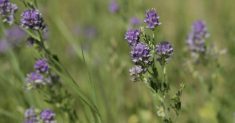SOUTHWEST:
Cereal crop harvest ranges from 80 to 90 per cent complete. Yields are average to above average with good quality. Wheat protein levels are reported as lower than average. Canola harvest ranges from 50 per cent complete to 70 per cent complete with average-to above-average yields and good quality. Flax harvest ranges from just starting to 30 per cent complete. Sunflowers and corn continue to mature with most acres reaching growth stages where fall frost would have minimal impact.
Producers continue to plant winter wheat into good soil conditions as canola is harvested. Feed supply remains a concern in the region.
Read Also

Manitoba sclerotinia picture mixed for 2025
Variations in weather and crop development in this year’s Manitoba canola fields make blanket sclerotinia outlooks hard to pin down
NORTHWEST:
Spring wheat harvest is 75 per cent to 95 per cent complete. Yields range from 35 to 65 bu/ acre. Quality has been good. Approximately 25 to 75 per cent of the barley is harvested with average yields of 75 bu/acre and 20 to 70 per cent of the oats are harvested with yields approximately 90 bu/acre. Canola harvest progress varies from 60 per cent to 95 per cent complete and quality has been excellent. Yields range from 35 to 60 bu/ acre, averaging 40 to 45 bu/acre.
Pastures are in fair to good condition. Some second cut is being harvested. Cattle producers are baling straw to stretch feed supplies for this winter.
CENTRAL:
The majority of cereals have now been harvested. Spring wheat yields range from 35 to 75 bu/acre. Quality is generally good with lower-than-average protein levels. Barley harvest is nearly complete with yields ranging from 60 to 100 bu/acre. Oat harvest is approaching 75 per cent complete with yields ranging from 80 to 150 bu/ac. Quality is fair to good and test weight is average to good. Canola harvest is about 70 per cent complete. Early-seeded canola fields are yielding 30 to 50 bu/acre, with some very high yields of 70 bu/ acre being reported. Early yield reports in flax are in the 25 to 30 bu/acre range.
Edible bean harvest continues. Soybeans are maturing and are dropping leaves. Sunflowers are starting to dry down. Sclerotinia head rot is a concern in many fields.
The warm weather has helped the corn crop with many fields in the dent stage. Some areas are well underway for cutting silage corn. Potato harvest continues with above-average yields. Warm temperatures have resulted in some in-storage problems.
Winter wheat acres seeded are lower than average due to the late harvest.
EASTERN:
Spring wheat harvest ranges from 80 to 100 per cent complete with yields ranging from 40 to 60 bu/acre. Wheat quality has been average with most samples grading #2 and some as #1 as FHB has been a major grade determinant. Oats are 60 to 80 per cent harvested with yields ranging from 65 to 100 bu/acre with average quality. Canola is 75 to 95 per cent combined with average quality. Flax harvest is 10 to 40 per cent complete. Flax yields are 25 to 30 bu/ acre. Soybean maturity ranged from 75 per cent yellow pod to 95 per cent brown pod. Corn development has advanced to the point where a light frost would cause minimal damage. Sunflowers are entering physiological maturity. Early-seeded winter wheat has emerged and is developing well.
A significant amount of field work was done last week. Some fields in localized areas are still too wet to be harvested without extensive rutting.
Hay and pasture land conditions were rated as good and most of the hay that was down at the start of last week was baled. More final cut hay went down at the end of last week. Pastures continued to support cattle.
INTERLAKE:
Eighty per cent of the cereals and canola crops in the south Interlake have been harvested and 50 per cent of the cereals and canola acreage in the north Interlake have been harvested. Harvest progress between farms range from 25 per cent to 100 per cent complete. Fusarium head blight has impacted the grades of Hard Red Spring wheat as less than five per cent of samples have graded #1 to date.
Soybeans, sunflowe r s, corn and corn silage are the major crops remaining to be harvested.
Fall tillage has been kept up with the 2009 harvest and 80 per cent of fields that were not seeded in 2009 have been either disced or deep tilled.
Quality second-cut hay was baled throughout the region the past week. Some alfalfa seed fields were still being cut and baled for hay. Some hayfields that were not cut in 2008 due to excessive moisture were cut and baled this past week. Tame hayland acres that were too wet to access earlier in the season still need to be cut and baled. Beef producers throughout the Interlake are getting closer to meeting their winter feed requirements.
The majority of the pasture in the Interlake is still in good condition.


















